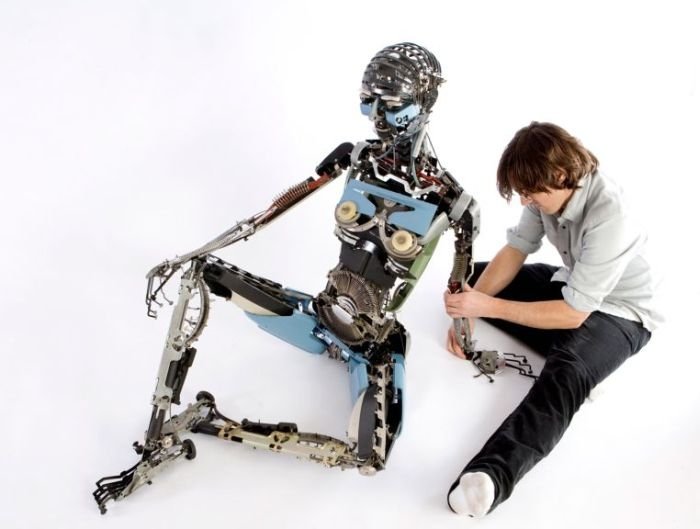|
|
Sculpture Made Out Of Typewriter Parts
|
Many old typewriters do not contain a separate key for the numeral 1 or the exclamation point, and some even older ones also lack the numeral zero. Typists who learned on these machines learned the habit using the lowercase letter l for the digit 1, and the uppercase O for the zero. The exclamation point was a three-stroke combination an apostrophe, a backspace, and a period. These characters were omitted to simplify design and reduce manufacturing and maintenance costs; they were chosen specifically because they were "redundant" and could be recreated using other keys. On modern keyboards, the exclamation point is the shifted character on the 1 key, a direct result the heritage that these were the last characters to become "standard" on keyboards. Holding the spacebar pressed down usually suspended the carriage advance mechanism, allowing to type multiple symbols on a single location. The ¢ symbol (meaning cents) was located above the number 6 on old typewriters. Modern keyboards now use ^ above the 6.
Many non-Latin alphabets have keyboard layouts that have nothing to do with QWERTY. The Russian layout, for instance, puts the common trigrams ыва, про, and ить on adjacent keys so that they can be typed by rolling the fingers. The Greek layout, on the other hand, is a variant QWERTY.
Typewriters were also made for East Asian languages with thousands characters, such as Chinese or Japanese. They were not easy to operate, but pressional typists used them for a long time until the development electronic word processors in the 1980s.
|
|









